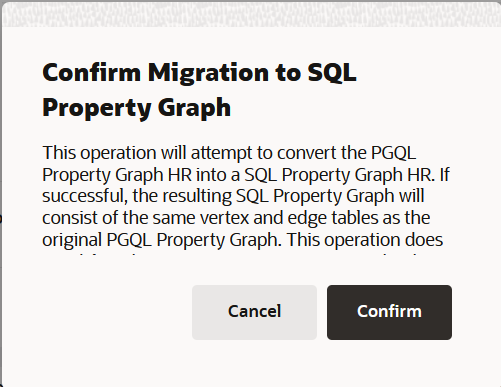Convert a PGQL Property Graph to SQL Property Graph
Graph Studio allows you to convert an existing PGQL property graph to SQL property graph.
Before you begin the migration operation, note the following:
- SQL property graphs are supported only on . Therefore, ensure that you are using an Autonomous AI Database instance with Oracle AI Database 26ai.
- PGQL property graphs based on database views cannot be migrated. If you attempt to migrate a PGQL graph based on views, then an error message is displayed and the original PGQL property graph is preserved.
- The migration operation does not delete the original PGQL property graph.
- The following describes a few basic characteristics of the newly
created SQL property graph:
- The SQL graph will have the original name of the PGQL
property graph and the original graph will be renamed by appending
_PGQLat the end of the name. - The SQL graph will consist of the same vertex and edge tables as the original PGQL property graph.
- The SQL graph will be owned by the user who triggered the migration operation, regardless of the owner of the PGQL property graph.
- The SQL graph will have the original name of the PGQL
property graph and the original graph will be renamed by appending

